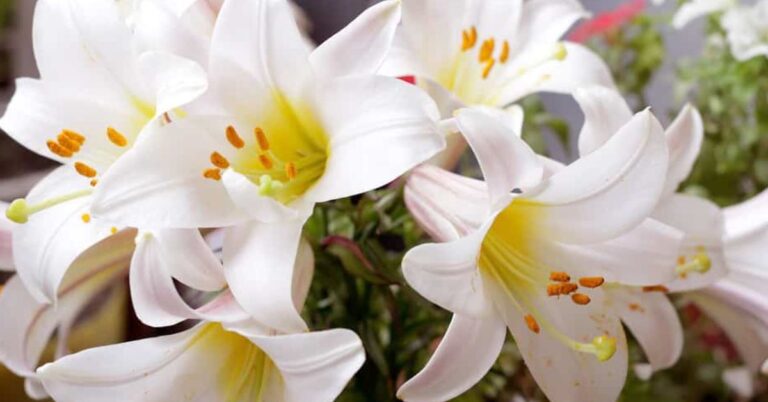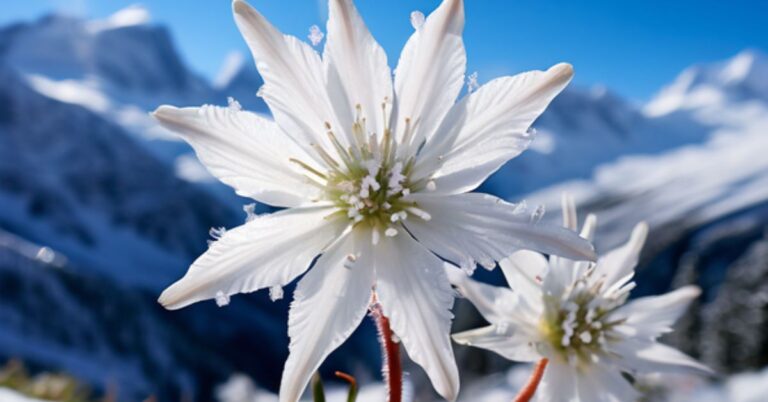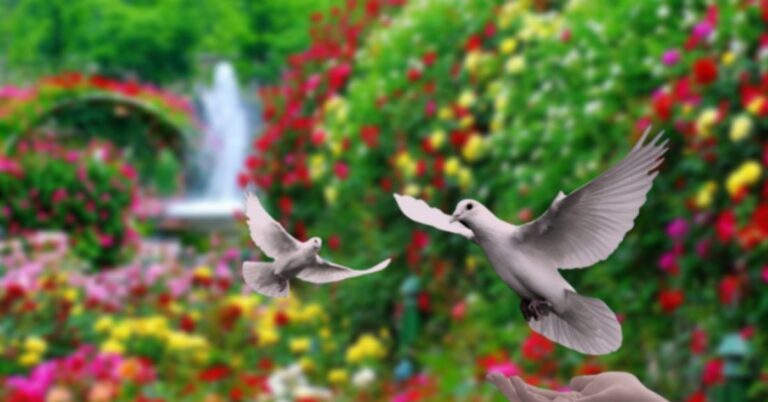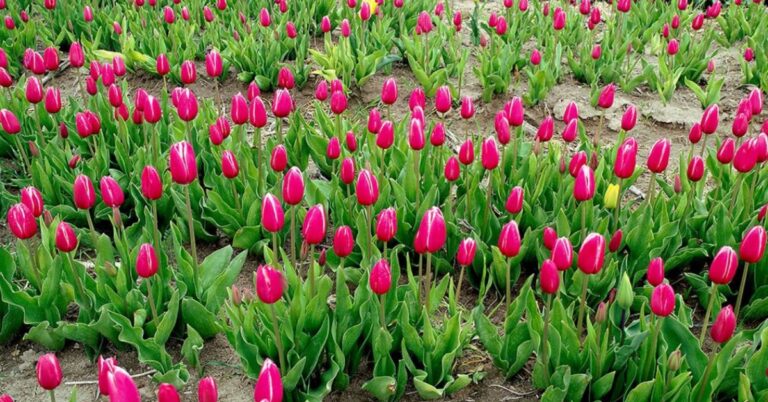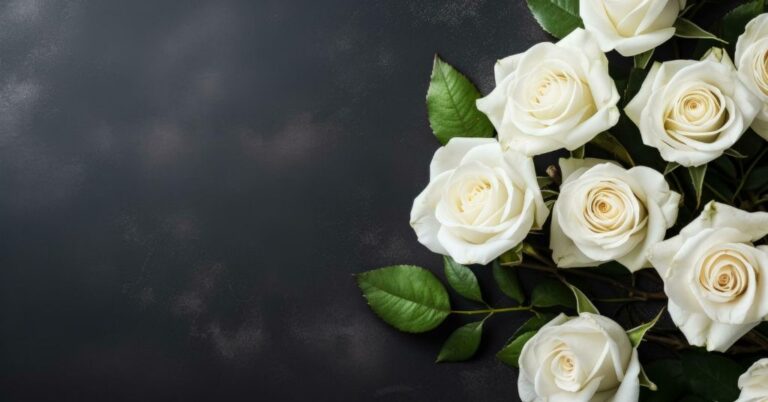Easter Flowers Meaning and Symbolism: A Detail Guide
Easter is a time of hope, renewal, and celebration, marking the resurrection of Jesus Christ and the arrival of spring. Flowers play an essential role in Easter traditions, symbolizing various themes like purity, new beginnings, and eternal life.
In this article, we’ll explore the Easter flowers meaning and symbolism, their historical and cultural significance, and their modern use in celebrations.
You can also check poppy as a symbol of remembrance
What Are Easter Flowers?
Easter flowers are specific blooms associated with the celebration of Easter and springtime. These flowers are admired for their vibrant colors, delicate forms, and symbolic meanings. Many Easter flowers are spring blossoms, signifying the end of winter and the start of a new season filled with life and beauty.
Popular Easter flowers like lilies, tulips, and daffodils are often chosen for their religious connotations, as they represent themes of resurrection, hope, and purity. These flowers are prominently displayed in churches, homes, and public spaces during the Easter season.
History of Easter Flowers
The use of flowers in Easter celebrations dates back centuries. In early Christianity, flowers were considered a sign of God’s creation and were often used to honor the divine. During the Middle Ages, flowers began to play a central role in religious ceremonies, especially during Easter Mass.
Certain flowers gained prominence in Easter traditions due to their symbolism:
- Lilies became associated with the Virgin Mary and the resurrection of Jesus.
- Daffodils were often seen as a representation of the renewal of life.
- Tulips were introduced to Europe from the Middle East and quickly became a symbol of spring and love.
Over time, these flowers became integral to Easter customs, appearing in homes, churches, and community events.

Easter Flowers Meaning and Symbolism
Easter flowers carry profound meanings, both religious and cultural.
- Resurrection and Eternal Life: Many flowers, such as lilies, symbolize the resurrection of Jesus Christ and the promise of eternal life.
- Purity and Innocence: White flowers like lilies and daisies are seen as representations of purity and innocence, reflecting the spiritual message of Easter.
- New Beginnings: Flowers that bloom in spring, such as tulips and daffodils, are reminders of new beginnings and the renewal of life.
In addition to their religious meanings, these flowers symbolize nature’s cycle of life, making them perfect for celebrating the hope and joy of Easter.
Have a look at Flowers That Symbolise Peace and Why
Popular Easter Flowers Meaning and Symbolism
1. Lilies
Lilies, especially white Easter Lilies, are considered the most iconic flowers for Easter.
- Symbolism: Purity, hope, and resurrection
- Religious Significance: According to Christian tradition, lilies grew in the Garden of Gethsemane, symbolizing Jesus’ resurrection. Their trumpet-shaped blossoms are seen as a call to faith.
Lilies are often used to decorate altars and homes during Easter, reminding people of the purity of Christ and the joy of His resurrection.
What does the Easter Lily symbolise?
This flower represents purity, new beginnings, and rebirth.
It’s an excellent choice for decorating if you’ve just moved to a new home or celebrated the arrival of a baby.
In religion, this lily is often linked to the resurrection of Jesus Christ, which is a key part of Easter celebrations for many.
In Pagan traditions, the Easter lily is connected to motherhood.
These flowers are also a wonderful way to show love and appreciation for your mother during Easter.
2. Daffodils
Known as the heralds of spring, daffodils are among the first flowers to bloom as winter fades.
- Symbolism: New beginnings, hope, and renewal
- Cultural Connection: In Christian art, daffodils are often depicted as symbols of resurrection and eternal life.
Their bright yellow color brings a sense of warmth and positivity, making them a popular choice for Easter celebrations.
Explore Yarrow
What does the Daffodil symbolise?
Daffodils add a bright touch of sunshine to any space.
They are especially popular at Easter, as everyone celebrates the energy of spring.
Daffodils symbolize happiness and hope, which are things we all need, especially given the current global situation.
These flowers also represent resilience, which is important for all of us.
If you know someone who is going through a tough time, giving them daffodils at Easter could help lift their mood.
3. Tulips
Tulips are versatile flowers that come in various colors, each carrying a unique meaning.
- Symbolism: Love, grace, and renewal
- Popular Colors for Easter: Soft pastel shades like pink, white, and yellow are favored during Easter.
Tulips are often used in bouquets and floral arrangements to add elegance and vibrancy to Easter decorations.
What does the Tulip symbolise?
Tulips are commonly used in Easter decorations in churches, businesses, and homes.
They bring a feeling of joy wherever they are displayed.
Each color of tulip has its own special meaning:
- White tulips stand for forgiveness
- Purple tulips represent faith
- Red tulips symbolize passion
- Yellow tulips stand for sunshine
You can choose a mix of different colored tulips for your Easter flowers.
Or, you can gift someone these beautiful flowers during this special time of year.
4. Hyacinths
Hyacinths are prized for their lovely fragrance and striking clusters of blooms.
- Symbolism: Peace, commitment, and joy
- Color Meanings:
- Purple: Forgiveness and sorrow
- White: Purity and innocence
- Blue: Spirituality and calmness
Hyacinths are a wonderful addition to Easter celebrations, enhancing the atmosphere with their rich scent and colorful beauty.
What does the Hyacinth symbolise?
The soft pastel colors of hyacinths represent the peace, calm, and happiness often linked to Easter.
These flowers are also seen as symbols of commitment.
That’s why you’ll often see them as Easter flowers in Christian churches.
Whether religious or not, anyone who enjoys the spirit of Easter will love the soft colors and lovely scent of the hyacinth.
5. Dogwood Flowers
The dogwood flower holds deep significance in Christian traditions, as its unique shape is believed to represent the crucifixion of Jesus.
- Symbolism: Strength, sacrifice, and redemption
- Religious Story: According to legend, the dogwood tree was used to make the cross on which Jesus was crucified. Its flowers are said to bear marks resembling the nails of the cross.
These flowers serve as a powerful reminder of the sacrifices made during Holy Week.
6. Easter Cactus
These vibrant succulents brighten up many homes and offices during Easter.
They come in colors like white, red, orange, peach, lavender, and pink, and have unique trumpet-shaped flowers.
People love them not only for their colorful blooms but also because of the plant’s interesting, uneven shape.
Even after the flowers fade, the plant still looks like a natural green sculpture, making it a lovely addition to any space.
What does the Easter Cactus symbolise?
The name of these flowers already suggests their connection to Easter.
They are also believed to symbolize new beginnings.
If someone you know has recently started a new chapter in their life, these Easter flowers could make a thoughtful gift.
7. Gerbera Daisy
These bright, colorful flowers are among the most popular cut flowers worldwide.
This makes sense because they have such a cheerful vibe.
Gerbera daisies come in many colors, from soft pastels to bright ones like orange and red.
They’re a perfect choice for a spring celebration like Easter.
What does the Gerbera Daisy symbolise?
With their happy look, it’s no wonder that gerbera daisies are believed to represent cheerfulness.
They also stand for innocence and purity.
This makes them a popular choice for those who celebrate the religious meaning of Easter.
We think gerbera daisies are perfect Easter flowers for anyone who could use a little joy and hope in their life.

8. Iris
There are about 300 types of Iris flowers.
Most of them bloom in late spring and summer, but some bloom earlier in spring, making them popular for Easter.
While purple is the most common color for irises, they can also be found in other colors like blue, yellow, white, pink, orange, red, and even black.
You can mix different colors of irises together to make a beautiful display.
What does the Iris symbolise?
The iris is often connected to Van Gogh, as the flower inspired his artwork. Nature has a way of sparking creativity, after all.
As flower experts, we understand how flowers like the iris can stir strong emotions.
The iris also represents the Passion of Christ, which connects it to Easter.
No matter their beliefs, everyone would appreciate receiving these beautiful Easter flowers, which are seen as symbols of wisdom and compliments.
Easter Flowers in Christian Traditions
Easter flowers are closely tied to Christian religious practices.
- Church Decorations: Flowers like lilies and roses are used to adorn altars, aisles, and church entrances during Easter services.
- Palm Sunday: Palms and flowers are often combined in processions to commemorate Jesus’ entry into Jerusalem.
- Easter Vigil: Floral arrangements symbolize the transition from darkness to light, reflecting the resurrection of Christ.
The use of flowers in these rituals underscores their importance as symbols of life, beauty, and faith.
Choosing the Perfect Easter Flowers for Your Home
When selecting Easter flowers for your home, consider the following factors:
- Symbolism: Choose flowers that align with the themes of Easter, such as lilies for purity or daffodils for new beginnings.
- Color Palette: Soft pastel shades like yellow, pink, and white create a serene and festive atmosphere.
- Arrangement Style: Combine different types of flowers in bouquets or vases for a dynamic and visually appealing display.
Adding fresh flowers to your home during Easter not only enhances the décor but also fills the space with a sense of joy and renewal.
Modern Use of Easter Flowers in Celebrations
Today, Easter flowers are used in a variety of creative ways:
- DIY Arrangements: Many people enjoy creating their own floral decorations, such as wreaths, garlands, and centerpieces.
- Gift Bouquets: Sending a bouquet of Easter flowers is a thoughtful way to share the spirit of the season with friends and family.
- Outdoor Displays: Potted flowers like tulips and daffodils are often used to decorate gardens and patios, celebrating the beauty of spring.
The versatility of Easter flowers makes them a timeless addition to modern celebrations.
How to Care for Easter Flowers
Proper care can help your Easter flowers stay fresh and vibrant for longer. Here are some tips:
- Watering: Keep the soil moist but not waterlogged.
- Light: Place flowers in a location with indirect sunlight.
- Pruning: Remove wilted petals and leaves to encourage new growth.
- Temperature: Keep flowers in a cool area to prevent them from wilting.
Taking good care of your Easter flowers ensures that they remain a beautiful symbol of the season throughout the celebrations.

Conclusion
Easter flowers are more than just beautiful blooms—they carry rich meanings and symbolism that enhance the joy and significance of the holiday. From the purity of lilies to the cheerfulness of daffodils, each flower tells a story of hope, renewal, and love. Incorporating these flowers into your Easter celebrations brings the spirit of spring into your home and heart, creating lasting memories of this meaningful season.
FAQs
1. What do lilies symbolize during Easter?
Lilies symbolize purity, hope, and the resurrection of Jesus Christ, making them the most iconic Easter flower.
2. Why are daffodils popular during Easter?
Daffodils are a symbol of new beginnings and renewal, perfectly aligning with the themes of Easter and spring.
3. Can Easter flowers be used as gifts?
Yes, Easter flowers are a thoughtful gift to share the joy and beauty of the season with loved ones.
4. How can I make my Easter flowers last longer?
Keep them in a cool place, water them regularly, and remove wilted parts to extend their freshness.
5. Are there eco-friendly options for Easter flowers?
Potted plants like tulips or daffodils are eco-friendly alternatives to cut flowers, as they can be replanted after the holiday.By understanding the Easter flowers meaning and symbolism, you can deepen your connection to this special season and make your celebrations truly memorable.


